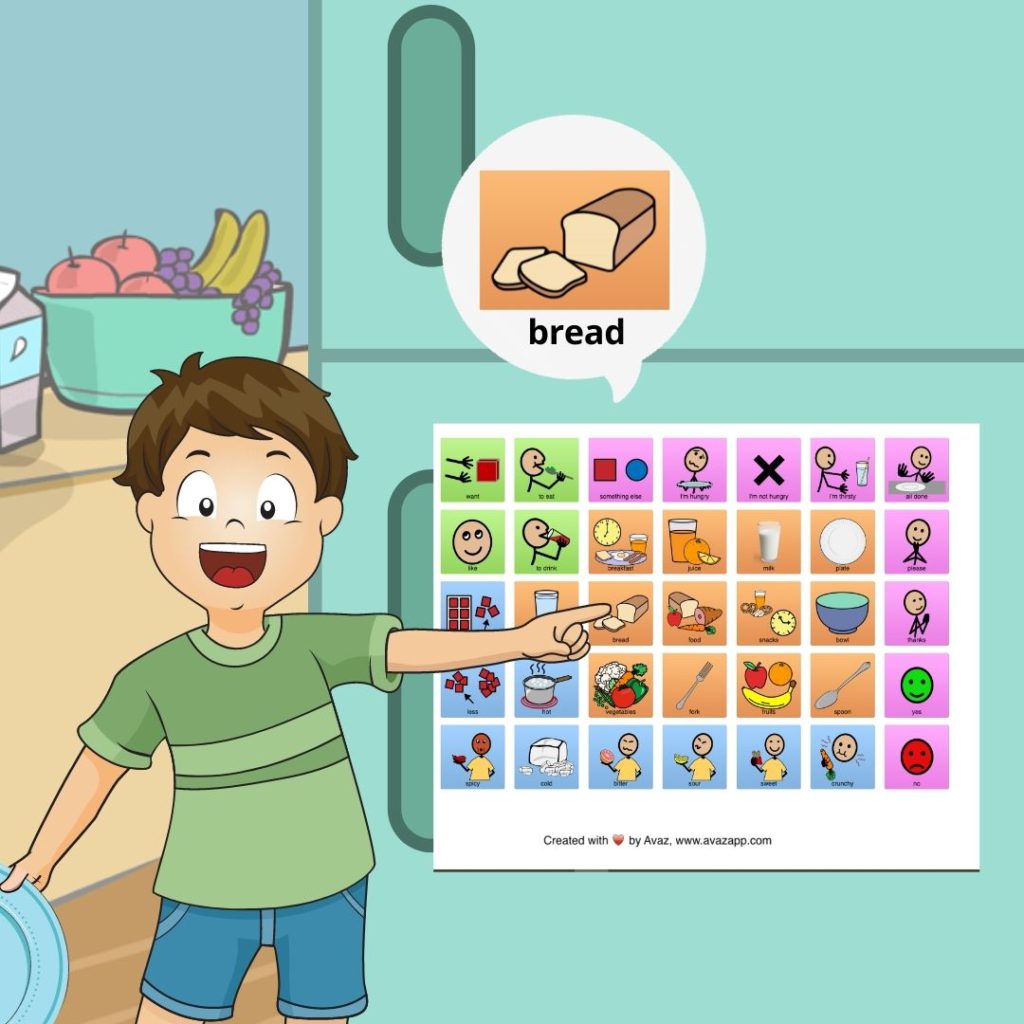This is a guest blog by Sonakshi Rawal, Speech Language Pathologist, for our ‘Making AAC Work’ series, a collection of blogs giving useful ideas for AAC implementation.
One afternoon when my daughter entered the rest room at a restaurant, she kept questioning me about the symbols on the door outside. I explained to her that there are different symbols for the Ladies’ room and the men’s room.
Would it be easy for a child to interpret which restroom is for whom without the visuals?
Would you be enthused to read a pamphlet without any visuals?


Visuals are everywhere in our daily routine and when these visuals are incorporated at home, communication skills are remarkably facilitated. Augmentative and Alternative Communication is the medium of communication to facilitate speech and language skills. AAC systems can be used anywhere and everywhere.
“Many children who use AAC have been shown to make rapid gains in their aided AAC productions when they are exposed to facilitative intervention techniques.” (Binger et al., 2008).
Here are some of the specific AAC Strategies that can be used at home-
HOME
H-Holistic
At home, parents are often bewildered as to how they should generalize the use of the AAC system. Home is the best place to begin. The day starts and ends at home and communication begins and ends at home. A child can be worked on holistically at home. There are plenty of motivators at home to facilitate communication. Home offers one of the best linguistic contexts to develop communication skills.
O-Opportunities to develop communication
At home, the child has multiple opportunities to develop communication skills that influence speech and language development. These opportunities include placing low tech communication boards around the home in different rooms.
For example, the kitchen can have related vocabulary for rice, veggies, etc. This may vary according to the child’s diet and communication needs. Here, using Avaz would be of advantage since it allows for so much vocabulary and pictures that can be customized.
Other opportunities include the living room, bed room, garage, kitchen, bathroom, backyard, garden etc. You can also place a low
tech communication board on the fridge. You can get magnetic tape to stick at the back of the core board or use magnets on the corners to hold your board on the fridge.


AAC boards can also be used in the pantry. Vocabulary can include names of family members, dry snacks, and verbs such as drink, eat etc. You can also use words like first you are going to go play, then you are going to eat dinner.
Similarly you can use a customised Avaz folder for meal times.
M-Modelling
Modelling is so so essential. The prerequisite for AAC is nothing but a communication partner who models enough to the child on a daily basis. Modelling can be done in different areas of the home and also in different situations such as playing a board game, reading a story, etc.
Did you ever imagine using Makaton signs and reading “The Very Hungry Caterpillar” by Eric Carle to your child? (Makaton sign language is a formal sign language brought to India from the UK by Dr Rubina Lal and is known as the Indian Makaton sign language. It is a low tech form of AAC and is used the world over to facilitate speech language skills)
While playing Pop up the Pirate game a low tech AAC board with vocabulary like pop, my turn, first, second, win, knife etc can be used.
You could use something as simple as blocks and work on colours, prepositions like up, down, in, and around.
Another strategy for the use of AAC is Expectant Delay like providing extra pause time about 10 to 15 sec in order to encourage communication. You look at the child with raised eyebrows so they know you are waiting for them to respond. Silences can be uncomfortable, but are definitely worth it when supporting children who use AAC! (Van Tatenhove & Arrington, 2008)


Asking Open-Ended Questions: Reducing your yes/no questions will encourage more complex language and more rewarding interactions.
For example, instead of asking –“Did you have a good time at school today?”, try asking –“What happened in play time today?”
Increase Responsivity: Accepting any attempts the child makes to communicate and expanding his utterances by providing appropriate and consistent responses will develop language and teach the power of communication. For example, the child presses ―eat on his device and you respond immediately and positively ―Yes! Let‘s eat the cake! (pressing eat and cake on the device as a model)
E-Environment
PUTTING IT ALL INTO PRACTICE
Remember that modelling is a teaching strategy that is done in the child‘s natural environment. Therefore, it is perfect for use any time at home, school or in any other community setting. Aided Language Stimulation will be most effective if the child experiences communication with his AAC system in real situations, all day, every day and everywhere. Just like Dr Seuss says “Fill your house with books in all crannies and all the nooks”, I would say “Fill your house with visuals and photos because AAC is our motto”.




WRITTEN BY
SONAKSHI RAWAL
(Master’s In Audiology And Speech Language Pathology)
Sonakshi Rawal is a Consultant Speech Language Pathologist at Lexicon Rainbow, Pune. She has immense experience with AAC training for parents and professionals. She can be looked up as pedispeechiemom on instagram. She is also a certified oral placement therapist and feeding therapist so don’t be surprised if you find her eating candy in therapy with her kids.
References
Aacapps.com
Bookishslp Instagram
Bassaac.com
Praacticalaac.org

